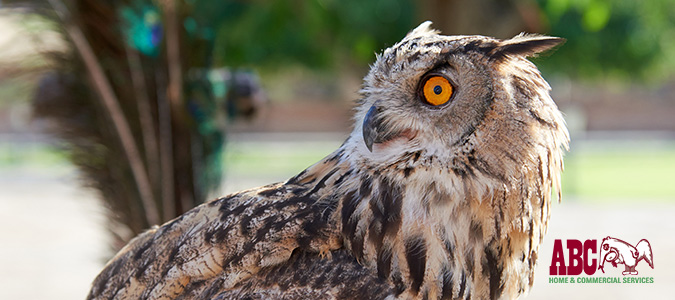Rodent control is extremely important this time of year. Temperatures are getting cooler and rodents are looking for a warm place to spend the winter months. Fortunately for us, North Texas is home to the best possible natural rodent control: barn owls. Barn owls are expert hunters with a healthy appetite. One owl alone can eat up to 10 mice a night and have 6-to-10 chicks to feed at a time.
Another upside is that they love the grassy plain areas covering much of North Texas. However, barn owls do not construct their own nests, which can make them seem scarce in many areas. By building a simple barn owl box for them to nest in, they will quickly make it their home and, in turn, help make sure your home and garden stay rodent free.
How to Build a Barn Owl Box
Step 1: Design
The box needs to be roomy enough to fit their large families but still protect them from other predators. Usually a simple box shape with an opening in the front will do the trick. If your box is not going to be placed inside a barn or building then it will need a roof to protect the owl and their brood from predators and the weather. Ideally the bottom of the box should be 12 -18 inches wide and 16 -24 inches in depth.
The barn owl box needs to be about 12-24 inches tall with a 5-6 inch hole in the front for entering and exiting. Place the hole about 3 to 6 inches up from the bottom to keep the chicks from falling out. Larger boxes of about 3 square feet in dimensions are best. However, large boxes can become difficult to hang and maneuver.
Step 2: Choose the material
Wood is usually the best and easiest material to use in terms of assembly. Exterior plywood is the best material to use for boxes that are going to be outside. They tend to be more durable and hold up against the weather.
Step 3: Put it together
Once the design is complete and the pieces are cut, assembling the box is the last step. First, use marine grade plastic resin or exterior wood glue to attach the sides to the front and back. Then, attach the bottom. Lastly, attach the roof, if it has one. Drill several vent holes near the roof to allow for ventilation, and space 8-10 drain holes each ¼ to ½ inch in diameter in the bottom to prevent it from holding water. Finally, since barn owls place no nest material, cover the bottom with 1 to 2 inches of wood shavings.
Step 4: Find your location
The last step is finding the location for your barn owl box. Barn owls tend to fly low so make sure it is at least 100 yards away from busy roads and high traffic areas. If possible, hang your barn owl box inside of a building as they prefer to nest in buildings. There should be an entry hole for the owl at least 9 feet off the ground. If it is placed in a barn, make sure it faces the back of the barn. The box should be at least 16 feet off of the ground to protect them from predators and human activity. If it cannot be placed inside, then a large tree or post makes an excellent mount for the box.
The barn owl’s numbers are thought to be limited because of the availability of suitable nesting sites. By building a barn owl nesting box, not only will you be confident that your home and surrounding area is rodent-free, you are also helping a species continue to survive.
If you do decide to make a barn owl box, be sure to discontinue any use of rodent poisons immediately. If the owl catches a rodent that has ingested the poison it will poison the owl and its chicks as well. If your pest problem gets out of control this winter, contact ABC Home & Commercial. We offer complete inspection and eradication services to make sure the job is done right the first time! Call 469-549-7300 to set up an appointment today!

